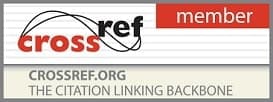Printed Journal | Refereed Journal | Peer Reviewed Journal
International Journal of Literacy and Education
2021, Vol. 1, Issue 2, Part A
Achievement of millennium development goals through education
Author(s): Dr. Kalpana Vajpeyi
Abstract: The Millennium Development Goals can be achieved in large part through education. People can escape poverty with the aid of education. People who receive education are given the knowledge and abilities they need to raise their income and widen their options for employment. The cornerstone of progress is equal access to education for boys and girls. The education of women and girls is most likely to have a positive multiplier effect on advancement toward all of the MDGs than any other policy action. Youths are saved by education. There is considerable evidence linking education for women and girls to longer life expectancies for mothers and children, as well as improvements in child and family health and nutrition. Education increases the likelihood that girls and mothers will immunize their children. Their children are less likely to suffer from malnutrition. If mothers were educated, fewer mothers would pass away. One of the most effective defences against dangers associated with pregnancy is maternal education. Girls and women who are educated are better able to make informed decisions about their health. Over 500,000 lives are lost annually due to pregnancy and delivery complications, which are the greatest cause of mortality and disability among women of reproductive age. Education increases a girl's likelihood of getting prenatal care. The best defence against HIV-AIDS is education. The agent of sustainable development is education. The funding deficit for education must be filled by international cooperation.
Pages: 161-165 | Views: 400 | Downloads: 172
Download Full Article: Click Here
How to cite this article:
Dr. Kalpana Vajpeyi. Achievement of millennium development goals through education. Int J Literacy Educ 2021;1(2):161-165.
Related Journal Subscription
Important Links






